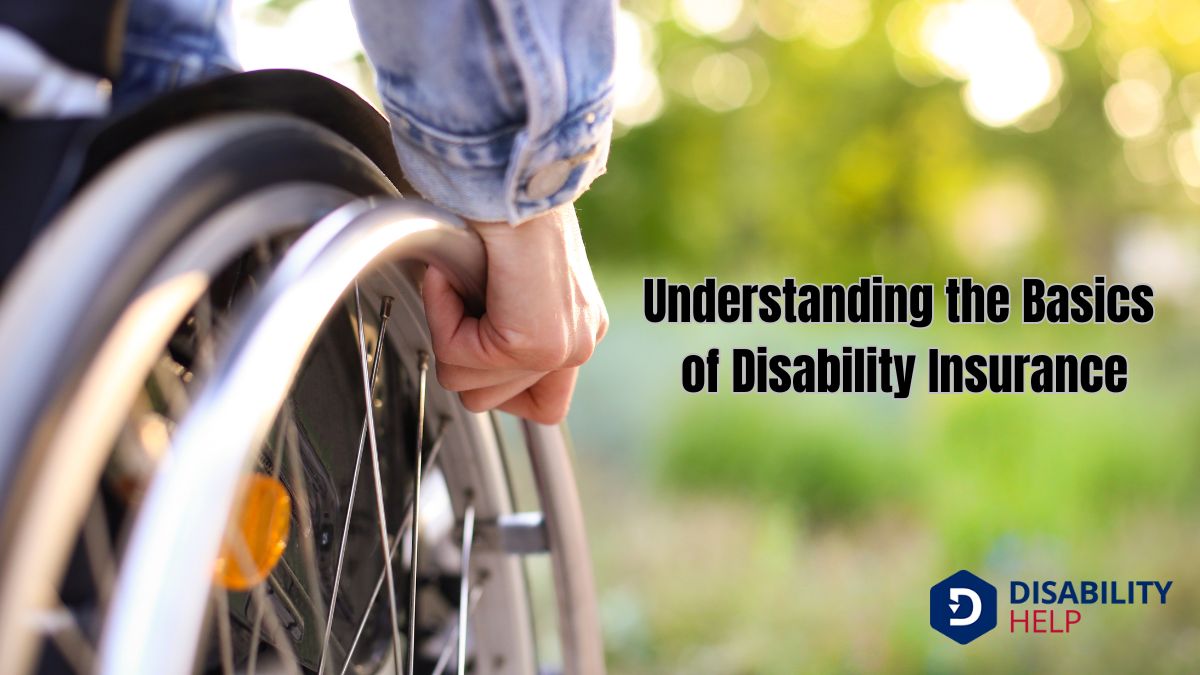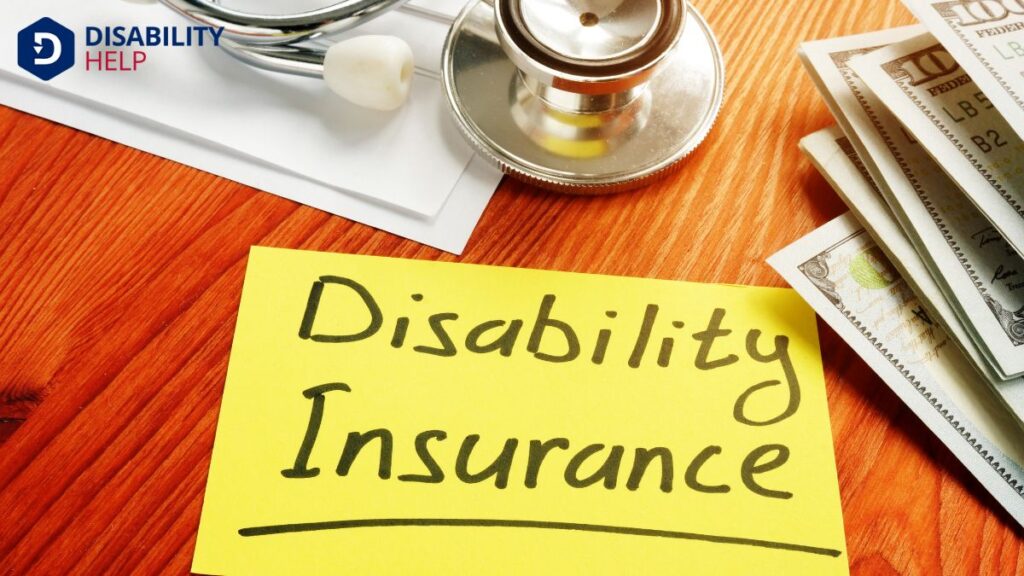When we talk about disability insuranceA form of insurance that provides income to individuals who are unable to work due to a disability., we're discussing an essential financial safety net. It steps in when illness or injury sidelines us from work, ensuring that we can still manage our day-to-day expenses. By replacing a portion of our income, it helps us maintain financial stability during recovery. But how does it really function, and what should we consider when choosing a policy? Let's explore these questions further.
Key Takeaways
- Disability insurance provides income protection during periods when illness or injury prevents work.
- It replaces a percentage of pre-disability income, usually between 50% and 70%, to cover essential expenses.
- Short-term policies cover temporary disabilities, while long-term ones offer extended support, often until retirement.
- Premium costs depend on factors like age, health, occupation risk, and coverage details.
- Claims involve notifying the insurer, submitting documentation, and following up to ensure smooth processing.
Understanding the Basics of Disability Insurance

Disability insurance, at its core, is a financial safety net designed to protect us if we're unable to work due to illness or injury. It guarantees we've a steady income stream when life throws us unexpected challenges.
We all hope to never use it, but understanding its basics is empowering. This insurance kicks in when we're unable to perform our job functions, helping cover essential expenses like rent, groceries, and bills.
When considering disability insurance, we need to look at how much income it will replace and for how long. Typically, policies cover a percentage of our income, providing peace of mind.
Types of Disability Insurance Policies
Let's explore the various types of disability insurance policies available to us.
We'll examine the differences between short-term coverage and long-term benefits, and how each can fit our needs.
Additionally, understanding the choice between group and individual plans will help us make informed decisions about our coverage.
Short-Term Coverage Options
Maneuvering the landscape of short-term coverage options can feel overwhelming, but understanding the basics is essential for anyone considering disability insurance.
Short-term disability insuranceInsurance that provides income replacement for a limited time when an employee is unable to work due... typically covers a portion of our income if we're unable to work due to illness or injury. The coverage period is usually between three and six months, offering a financial bridge during recovery.
Let's break down the key aspects:
- Waiting Period: This is the time we must wait after a disability occurs before benefits start. It often ranges from a few days to a couple of weeks.
- Benefit Amount: Policies typically cover 50% to 70% of our income, helping maintain financial stability.
- Policy Cost: Premiums vary based on factors like age, health, and occupation, ensuring we find a plan that fits our needs.
Long-Term Policy Benefits
While short-term coverage provides immediate relief, it’s equally important to reflect on the advantages of long-term policies that guarantee continued support over extended periods.
These policies serve as a vital safety net, offering financial stability when we face prolonged illnesses or injuries. They typically cover a significant portion of our income, often up to 60%, ensuring that we can maintain our lifestyle and meet essential expenses.
Long-term disability insuranceInsurance that provides income replacement for individuals who are unable to work for an extended pe... often kicks in after short-term benefits expire, providing us with peace of mind. In addition, these policies can span several years, sometimes even until retirement age, depending on the terms.
We must understand the elimination period, the time we wait before benefits begin, as it plays a role in our financial planning strategies.
Group vs. Individual Plans
When choosing disability insurance, we often face a decision between group and individual plans, each with distinct advantages.
Group plans, usually offered by employers, tend to be more affordable since the cost is shared among many employees. They also require less medical underwriting, making them accessible to those with health concerns. However, they mightn't be as thorough or customizable as individual plans.
On the other hand, individual plans offer more tailored coverage but can be pricier. They’re portable, meaning we can keep the policy even if we change jobs.
Let's break it down:
- Group Plans: Affordable, employer-sponsored, less hassle with medical checks.
- Individual Plans: Tailored coverage, portable, potentially better benefits.
- Considerations: Cost, coverage needs, and job stability.
Understanding these differences helps us make informed decisions.
Short-Term vs. Long-Term Disability Insurance
Understanding the differences between short-term and long-term disability insurance is essential for making informed decisions about our financial protection.
Short-term policies typically cover a portion of our income for a few months, often up to a year, and are designed for temporary disabilities. They can help us manage expenses during recovery from injuries or illnesses that prevent us from working in the short term.
In contrast, long-term disability insurance provides coverage for more extended periods, potentially until retirement age. These policies kick in after a waiting period, usually when short-term benefits end, and support us through chronic conditions or severe injuries.
Choosing between them depends on our individual needs and financial situation, ensuring we're protected regardless of the duration of our disability.
Key Features and Benefits of Disability Insurance
Let's explore the key features and benefits of disability insurance, focusing on coverage options, the claim process, and policy benefits.
We'll look at how different coverage options can suit our needs and examine the steps involved in making a claim.
Understanding these elements helps us make informed choices about protecting our financial future.
Coverage Options Explained
How exactly does one navigate the myriad coverage options available in disability insurance?
Let’s break it down together. We start by understanding the essential features that can make a big difference when selecting a policy. Choosing the right coverage means evaluating our personal needs and potential risks.
Here are some key factors to evaluate:
- Benefit Period: This determines how long we’ll receive payments while unable to work. Options vary from a few years to retirement age.
- Waiting Period: This is the time we must wait before benefits begin. Shorter waiting periods typically mean higher premiums.
- Coverage Amount: We need to decide the percentage of our income we'll want replaced if disabled.
These elements help us tailor a policy that fits our unique circumstances.
Claim Process Overview
Having examined the coverage options available, it's important to explore how to navigate the claim process effectively.
First, we need to notify our insurer promptly when a disabling event occurs. This guarantees timely processing.
Next, gather necessary documents like medical records, proof of income, and detailed information about the disability. These will support our claim.
It’s essential to fill out the claim forms accurately, providing all requested information to avoid delays.
Once submitted, stay in communication with the insurer, tracking the status and responding to any additional inquiries they might have.
Patience and persistence are key, as the process can take time.
Policy Benefits Breakdown
Understanding the key features and benefits of disability insurance empowers us to make informed decisions about our coverage.
Disability insurance provides financial protection when we can't work due to injury or illness. It guarantees a portion of our income continues, helping us maintain our lifestyle and meet essential expenses.
Let’s break down some of the benefits:
- Benefit Period: This is the duration we'll receive payments. Options range from a few months to several years, or even until retirement age.
- Waiting Period: Also known as the elimination period, it's the time between the disability onset and when benefits kick in. Choosing a period that fits our savings cushion is key.
- Coverage Amount: Typically, policies cover 50-70% of our pre-disability income, offering vital support during recovery.
How Disability Insurance Premiums Are Determined
When we explore the factors influencing disability insurance premiums, we find that several key components come into play.
Our age and health status considerably affect the cost, as younger and healthier individuals generally pay lower premiums. Our occupation is another essential factor; jobs with higher risks of injury or illness often lead to higher premiums.
Additionally, the coverage amount and benefit period we select can increase costs—the more extensive the coverage, the higher the premium. The elimination period, or the waiting time before benefits kick in, also impacts the premium. A longer elimination period typically reduces the cost.
Finally, lifestyle choices, such as smoking, can raise premiums, as they’re associated with higher health risks. Understanding these factors helps us make informed decisions.
The Claims Process for Disability Insurance
After we've considered how premiums are determined, it's just as important to understand the claims process for disability insurance.
When we need to file a claim, knowing the steps can make the process smoother. First, we should promptly notify our insurance company of our disability. This initial step guarantees that our case is on record and starts the process.
Next, we'll need to complete the necessary claim forms accurately, providing all required documentation. This may include medical records and proof of income.
Finally, let's follow up on our claim regularly to stay informed about its status and address any additional requests from the insurer.
- Notify the insurer promptly
- Complete claim forms with accurate documentation
- Follow up regularly for updates
Understanding each step helps us navigate this vital process.
Tips for Choosing the Right Disability Insurance Policy

Choosing the right disability insurance policy can seem overwhelming, but with a few key tips, we can simplify the process.
First, let's evaluate our financial needs to determine how much coverage is necessary. It’s important to take into account our monthly expenses and any potential changes in the future.
Second, we should compare policies from different providers. Each company offers varying terms, definitions, and premiums, so reviewing these details helps us find a policy that best fits.
Third, understanding the waiting period before benefits kick in is vital. A shorter waiting period might increase premiums but provide quicker financial support.
Finally, let's check for policy features like partial disability benefitsFinancial assistance provided to individuals who are unable to work due to a disability, such as Soc..., which can be beneficial if we can work part-time.
With these tips, we're on the right path.
Conclusion
To summarize, we've explored the essentials of disability insurance and its importance in safeguarding our financial well-being. By understanding the different types of policies, we can choose the right coverage for our needs. Remember, disability insurance isn't just about protecting our income—it's about providing peace of mind during tough times. Let's take the necessary steps to guarantee we’re prepared for the unexpected, so we can focus on what truly matters: our recovery and well-being.






